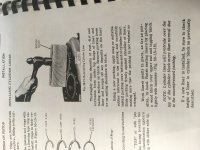I think I may have answered my own question.
My block is old. Meaning it was originally machined to have a single o-ring placed in there. So there should only be one step, or o-ring seat (grove) machined into the block.
The reason I asked is due to the fact I am looking at other JD1020 blocks that have multiple grooves machined, and was telling myself "if your block is "supposed" to look like that, then there is no way you are going to be able to fix it".
But if all I need, due to my block being the older design, is one seating surface then I feel more confident I'll be able to fix mine.
See the link below.
This is an older block, with only one seat. Meaning all I need to do is repair mine to look like this? Get the new updated 3 o-ring liners and keep moving forward.
John Deere JD 3.152 Engine Block Good Used T26935 2 Cyl Diesel 1 , 3��, 35�
, 3��, 35�
My block is old. Meaning it was originally machined to have a single o-ring placed in there. So there should only be one step, or o-ring seat (grove) machined into the block.
The reason I asked is due to the fact I am looking at other JD1020 blocks that have multiple grooves machined, and was telling myself "if your block is "supposed" to look like that, then there is no way you are going to be able to fix it".
But if all I need, due to my block being the older design, is one seating surface then I feel more confident I'll be able to fix mine.
See the link below.
This is an older block, with only one seat. Meaning all I need to do is repair mine to look like this? Get the new updated 3 o-ring liners and keep moving forward.
John Deere JD 3.152 Engine Block Good Used T26935 2 Cyl Diesel 1
